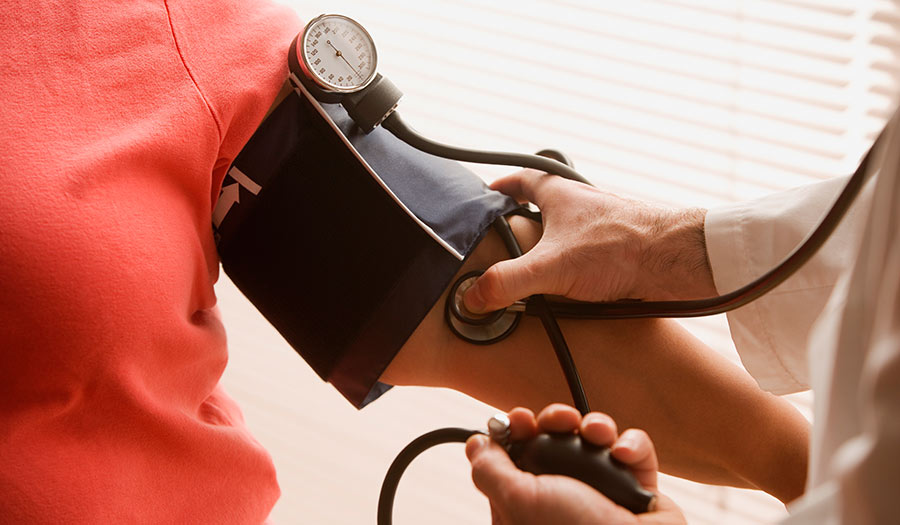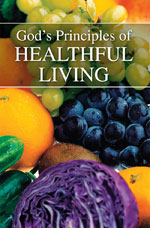 Getty Images
Getty Images
Article
Left unchecked, this increasingly common condition can be fatal. But there are simple, practical actions you can take to protect yourself.
Learn the why behind the headlines.
Subscribe to the Real Truth for FREE news and analysis.
Subscribe NowThink back to your childhood. Remember filling up a water balloon with a hose or spigot? As water rushed into the balloon, the pressure increased. If you forgot to pay attention—pop! The stressed rubber would break without warning, with water splashing everywhere!
Although the above scenario may not appear to be related to health, it illustrates a principle that is playing out with the blood vessels of adults across the globe. This phenomenon is high blood pressure. The higher the pressure, the greater the force being exerted against the walls of your blood vessels.
The World Health Organization estimates that nearly 1.3 billion adults globally have high blood pressure and that 46 percent of these are unaware of their condition!
“High blood pressure affects nearly half of the adult population in the United States, yet many people who have the condition don’t know they have it,” the Centers for Disease Control and Prevention stated. “Even though most people with uncontrolled high blood pressure have health insurance and visit a health care team member at least twice a year, the condition is often not diagnosed.”
When someone has diabetes, cancer, gout or arthritis, there are usually discernible symptoms. With high blood pressure, there can be no symptoms!
“There’s a common misconception that people with high blood pressure, also called HBP or hypertension, will experience symptoms such as nervousness, sweating, difficulty sleeping or facial flushing,” the American Heart Association reported. “The truth is that HBP is largely a symptomless condition. If you ignore your blood pressure because you think symptoms will alert you to the problem, you are taking a dangerous chance with your life.”
This is why high blood pressure is called a silent killer—it is a deadly condition that often manifests without warning.
Left untreated, hypertension increases the risk of many diseases, including heart disease and stroke—two of the top five most common causes of death in the U.S. We must examine this condition to fully understand it, as well as look at practical actions you can take to avoid it.
Contributing Factors
There are various risk factors for hypertension. We will examine three primary contributing factors.
Obesity: Risks begin to increase for adults who are overweight, defined as a Body Mass Index (weight adjusted for height) greater than 25. At a BMI of 30, the risk is substantial. The CDC defines obesity as having a body mass index of 30 or higher. According to the National Health and Nutrition Examination Survey by the U.S. Department of Health and Human Services, “Adult obesity is associated with increased risk of a number of health conditions, including diabetes, hypertension, high cholesterol, cardiovascular disease, stroke, arthritis, and certain cancers. The prevalence of obesity was 42.4% among U.S. adults in 2017–2018.” This means nearly half of adults are increasing their own health risks—unnecessarily!
Inactivity: According to the National Library of Medicine, “Physical inactivity is a leading cause of morbidity and mortality and is a major public health problem. Insufficient activity is responsible for a large proportion of non-communicable diseases such as hypertension.”
Only about one in five American adults meet the minimum recommended requirement for physical activity. Increasingly few are reaping the benefits that exercise can bring.
Diabetes: This is a condition in which the body has high blood sugar levels for prolonged periods. Over 34 million American adults suffer from diabetes—about 10 percent of the population! This is concerning because, as Johns Hopkins Medicine reported, “High blood pressure is twice as likely to strike a person with diabetes than a person without diabetes.”
According to the CDC, about 90-95 percent of those with diabetes suffer from Type 2 or adult-onset diabetes. Type 2 diabetes is associated with BMI measures above the healthy range of 25. In fact, it is uncommon to have Type 2 diabetes without an elevated BMI.
These three conditions—obesity, inactivity and diabetes—are on the uptick in America. This makes a perfect storm for people to develop high blood pressure.
Blood Pressure Explained
Before examining how to address hypertension, we must first understand what blood pressure is and how to measure it. Blood pressure is typically calculated by using two numbers in a ratio, such as 120/80. This ratio is commonly stated: “The doctor said my blood pressure was 120 over 80.”
What do these two numbers mean?
Think for a moment of the last time you took your own pulse. If you never have, take a moment to touch your wrist beneath your thumb and move your finger around until you feel a beat similar to that of your heart. Every time your heart contracts, it creates pressure, which pushes blood through your circulatory system.
The moment your heart contracts is the time when the greatest amount of pressure is exerted on your arteries. The measurement for this is known as the systolic pressure and represents the first or top number in your blood pressure ratio.
As your heart relaxes in between heartbeats and refills with blood, the pressure in your arteries drops. This is called diastolic pressure and represents the second or bottom number in your blood pressure reading.
According to the American Heart Association, resting blood pressure falls into the following categories:
Normal—anything less than 120/80
Elevated—120-129/less than 80
High Blood Pressure (Hyper-tension) Stage 1—130-139/80-89
High Blood Pressure (Hyper-tension) Stage 2—140 or higher/90 or higher
Hypertensive Crisis—Higher than 180 and/or higher than 120. At this stage, it is recommended to contact your doctor immediately!
Bear in mind that your blood pressure reading can change from minute to minute due to factors like stress, posture, caffeine intake, water intake or drowsiness. The best time to retrieve an accurate reading of it is before eating or drinking, and while you are at rest.
Defeating a Silent Killer
The factors we examined that contribute to high blood pressure—obesity, inactivity and diabetes—point directly to what to address. By managing your health in each of these areas, you put yourself in a much better position to reach and maintain a normal blood pressure.
What are some practical things you can do today to reduce your risk?
First, know where you stand. Since the symptoms of high blood pressure are hard to identify, invest $20-$50 in a simple blood pressure monitor. These can be purchased online or at local department stores such as Walmart.
The reading you get will inform what your approach should be. Higher numbers indicate a more pressing need to take action.
If you are not active, begin incorporating physical activity into your schedule. The CDC explained that according to the current Physical Activity Guidelines for Americans, “Physical activity is anything that gets your body moving. Each week adults need 150 minutes of moderate-intensity physical activity and 2 days of muscle strengthening activity.”
They continued, “Adults should move more and sit less throughout the day. Some physical activity is better than none. Adults who sit less and do any amount of moderate-to-vigorous intensity physical activity gain some health benefits.”
Start where you are. Find activities you enjoy that work for your schedule—even something as simple as taking a short walk at lunchtime. For some, a membership at a health club is the catalyst they need. For others, playing outdoor tennis with a friend is a good entry point.
If you are diabetic, speak with your doctor about lifestyle changes you can make to improve your situation. This could involve limiting your intake of carbohydrates, reducing portion sizes and eating a more balanced diet.
Finally, assess how much weight you need to lose. A report by the U.S. Department of Health and Human Services explained: “Losing even 10 pounds can lower your blood pressure—and losing weight has the biggest effect on those who are overweight and already have hypertension.”
Shedding pounds is difficult, but it can be done. Consider tracking what you eat using an app or a smartwatch. Look for areas in your diet to cut back on or eliminate completely, such as sugary drinks. Find a friend to share your goals with to help keep you accountable.
All in all, maintaining a healthy blood pressure comes back to leading a healthy overall lifestyle. By educating yourself, making simple changes to your lifestyle and consulting with a professional when appropriate, you can improve your situation and avoid the threat of this silent killer.
There is one more critical source of help available to you: God’s Word. Few realize that the Bible contains timeless principles that, if applied, lead to vibrant health. The God who declares, “I wish above all things that you may prosper and be in health” (III John 2) is ready and eager to help you in this pursuit.
Want to learn more? The place to start is our booklet God’s Principles of Healthful Living.
Other Related Items:
- Eat Your Veggies!
- How to Fit Exercise into a Busy Schedule
- Nine Ways to Eat Healthfully in an Economic Downturn



